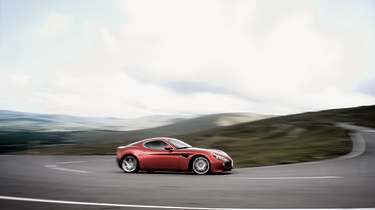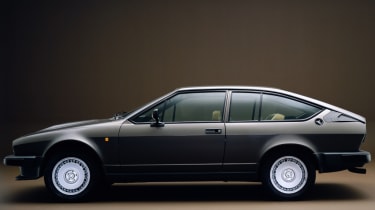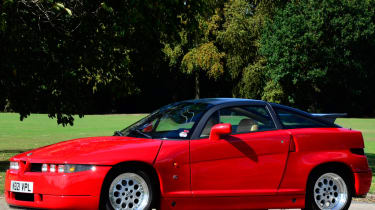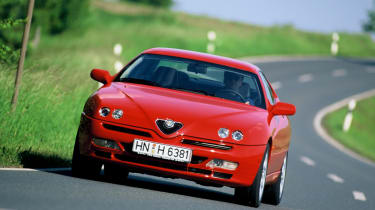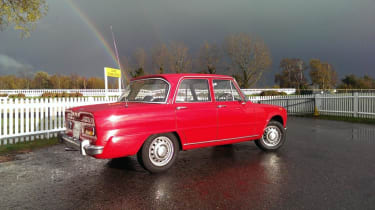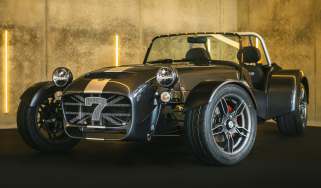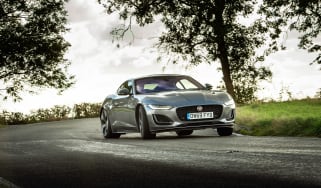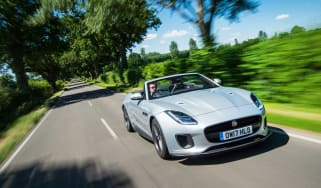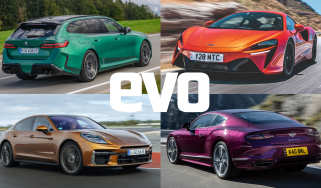Alfa Romeo greats - 10 cars the new Giulia has to live up to - Greatest Alfa Romeos - page 2
Can't understand why the new Alfa Giulia is creating such a stir? These past hits should give you some idea
8C Competizione
The 8C marked the start of Alfa Romeo’s most recent resurgence, emerging out of the blue with a 450bhp V8-Maserati powered supercar. When launched in 2006 it generated a huge buzz, while its price tag of £110,000 made it a lot more affordable than any contemporary Ferrari GT.
That price now looks quite reasonable, with most examples now changing hands for well over £150,000 – a mark of both the car’s rarity and the draw of the Alfa Romeo badge. And the styling – while not universally popular, there’s no doubting its visual impact.
The 8C is predictably a fiery and fun car to drive, albeit not as dynamically polished as its contemporaries and capable of biting should you abuse its sharp responses.
Alfa Romeo GTV6
Based on the Type 116 Alfetta, the Giugiaro-penned Alfetta GT – later named GT Veloce and abbreviated to GTV6 once equipped with a 2.5-litre V6 – turned an unremarkable saloon into a pretty, rakish coupe.
It’s the GTV6 of 1980 that is now best remembered, partly for that V6 – an early instance of the now legendary ‘Busso’ unit developed by engineer Giuseppe Busso. Revered for its sound, it also made the GTV6 a brisk performer.
Those less attuned to the Alfa’s significance may also recognise the car from a fleeting movie appearance. In 1983’s Octopussy, it was a GTV6 seen exiting a cobbled junction sideways and breaking into a US Air Force base with Roger Moore at the wheel.
Alfa Romeo SZ
A few Alfa Romeos have carried the name SZ, for ‘Sprint Zagato’, but only one has also borne the nickname, ‘Il mostro’. Italian for ‘the monster’, it doesn’t take more than a glance to figure out why.
Age has dulled the SZ’s shock factor but its square-edged styling, sextet of square headlamps, and bluff rear end are as divisive now as they were at launch in 1989. From some angles it’s muscular, from others ungainly.
Powered by the Alfa 75’s 3.0 V6, albeit tuned to 207bhp, a howling exhaust note accompanied a 7-second 0-62mph dash and 152mph top speed. Handling was precise too, thanks to the transaxle layout from the 75. But the SZ will always be remembered for its styling.
Alfa Romeo GTV
Launched in 1995, the 916-series GTV was a very different car from its GT Veloce and GTV6 predecessors. It was front-wheel drive, for a start, and Giugiaro lines made way for those from Pininfarina.
The wedgy look was best appreciated in coupe form, rather than the slightly bottom-heavy Spider convertible, and age hasn’t wearied its beauty. That it was also one of the best cars in its class at a time when small coupes were enjoying a market resurgence was an impressive feat.
The ‘Busso’ V6 made another appearance, as did a 2.0-litre version of Alfa’s Twin Spark four-cylinder. evo appeared too late to judge the car at launch, but the V6 featured in evo's very first Car of the Year competition, and in August 1999 we praised the V6 engine, ultra-quick steering and strong traction in a coupe group test - narrowly edged by the similarly dramatic Fiat Coupe. Little could touch its styling, however.
Alfa Romeo Giulia
And here it is, the definitive Giulia four-door. Alfa’s modern Giulia is a world away from the original 1962 car, particularly in Quadrifoglio spec, but the classic is one of the golden nuggets in Alfa’s history.
It doesn’t look it, but the three-box silhouette was surprisingly aerodynamic in its day – thank the sharply cut-off ‘kamm’ tail, which minimized turbulent air behind the car. Now it looks quaint, but in its day the boxy Giulia was high-tech.
The Ti Super version of 1963 was the most potent – its 1.6-litre four-cylinder developed 110bhp, breathing through a brace of two, double-choke Weber 45DCOE carbs. It was light too and had a stiff chassis, leading to racing success. Just 501 were made to this specification, though the Giulia range as a whole proved highly successful.

